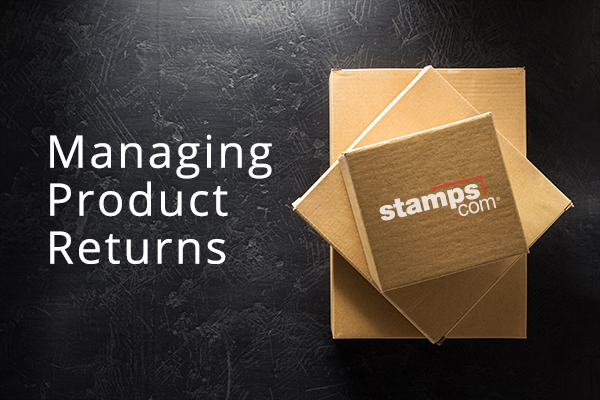Returns are an inevitable part of ecommerce, and particularly during the holiday season when shoppers with good intentions buy gifts for their loved ones but might pick out the wrong size, style or color for their intended recipient.
One study released earlier this year by Narvar found that Millennials (under the age of 30) and affluent shoppers place a strong emphasis on the online return experience. The generous returns policies offered by companies such as Zappos (fast and free, with a 365-day window) make it easy for shoppers of any demographic to view returns as a natural part of the ecommerce buying cycle. They’ve come to expect convenience and transparency during the process, and might take their business elsewhere if they aren’t offered free returns—84 percent of those surveyed by Narvar said restocking fees would prevent them from making a purchase, and 74 percent said return shipping fees would prevent them from making a purchase.
Here are five steps an ecommerce seller can take to make returns easier, both after the holidays and all year long:
- Create a returns portal
Consider creating an online returns portal for your customers where they can input information about their return and print out the shipping label and other necessary documents. This allows you to control the return shipping label and the cost associated with returning the item so you can avoid customers expecting you to pay when they opt for higher-cost shipping options. This returns portal also gives you the ability to monitor data and generate reports on your product returns. Having this information readily accessible can help save you money in the future—you might find patterns in these reports that draw your attention to problems on your site, such as inaccurate product specifications or poor photo quality.
- Use a return merchandise authorization system
The Return Merchandise Authorization, or RMA, system can be a part of your returns portal. Having an RMA number allows your inbound shipping team to easily pull up the return details of the order, and coding that RMA number or other return information on the label makes for easier processing once a returned product arrives. This way your inbound shipping team knows what the product is and why it’s coming back, and your warehouse team has a view of inventory due back to the warehouse.
- Provide good return tracking
Tracking of a returned item is imperative. Transparency and tracking capabilities are critical in the returns process, which is why it’s imperative to provide good return tracking information to your customer. As a retailer, you should keep shoppers informed of return package status—consider sending an email when their return enters the mailstream or when you receive the package, so customers aren’t worried that their packages could be lost. It’s also important to keep them informed regarding their refund status so they know when to expect to see a credit posted to their account. Transparency by way of quality return tracking communication can also help alleviate the amount of inquiries coming into your customer support team.
- Allow customers to return online purchases in person
Shoppers want the option to return online purchases to a brick-and-mortar store—sometimes it’s easier to drop in than it is to print out a label, package up a return and ship it. In addition to making the return more convenient for your customer, this gives the store the opportunity to immediately recapture a sale and possibly upsell or cross sell since the buyer is already on site. Plus, an immediate refund helps foster that positive customer experience.
#5 Create (or improve your) returned product review process
Develop a good product review process for your returns so the team knows how best to handle returned items. Can the product be returned back to stock as new/unused? Would it be better to repair or otherwise fix the item so it can go back into stock as reconditioned? Does the product need to be flat-out destroyed?
Other things to think about when developing your returned product review process:
- Which team initiates a refund or exchange once you’ve received the returned item?
- How long does it take to process an exchange or refund, and are you clearly communicating this process with the customer?
- Do you have accounting processes in place to handle the product coming back into inventory, reversing the sales tax collected and tax liability?
Yes, returns take some work, but if done right, they can help you attract customers and build brand loyalty.


